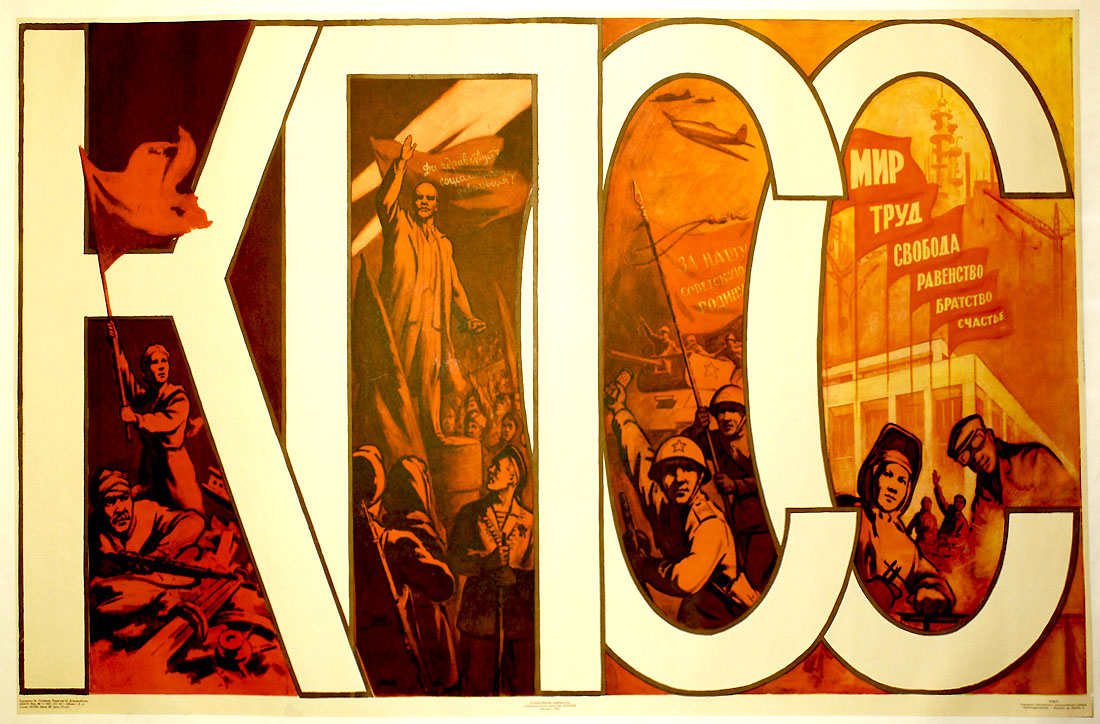
KPSS (Communist Party of the Soviet Union)
Poster Number: PP 093
Category: Events
Media Size: 50x31
Poster Type: Lithograph and Offset
Publishing Date: 1963
Editorial Information: Editor M. Iastrzhembskaia
Technical Information on Poster: [Approved] January 21, 1963; Publication No. 1-1031; Volume 1 sheet of paper; Order 48; Price 10 kopeks
Print Run: 140,000
Glavlit Directory Number: A02619
Catalog Notes: PP 093 Events
Artist: Solov'ev, Mikhail Mikailovich — Соловьёв, Михаил Михайлович
Mikhail Mikailovich Solov'ev was born in Moscow. In 1930 he graduated from the advanced courses of the A.Kh.R.R. (Association of Artists of Revolutionary Russia). While he began his professional career as a painter, from 1944 on, he exclusively designed posters. He was made a member of the Union of Soviet Artists in 1933 and later, he led the poster section of the Moscow Union of Artists. During the 1930s, Solov'ev worked on posters and dioramas ...
Read More About This Artist
Printer: Kalinin City Poligrafkombinat of Sovnarkhoz of the RSFSR — Калининский полиграфический комбинат Московского совнархоза Верховного Совета РСФСР
The Poligrafkombinat (printing plant) of Kalinin was the printer for Sovnarkhoz RSFSR (the Regional Council of National Economy of the Russian Socialist Federative Soviet Republic). Sovnarkhoz was an economic reorganization that came about in 1957 when over 100 "economic regions" were created in the USSR to localize and reduce the inordinate role of state administered, top-down economics. The printer was located at 5 Lenin Avenue (formerly Voroshilov Street) in the city of Kalinin (Tver) northwest of ...
Read More About This Printer
Publisher: IzoGiz (State Publishing House of Fine Art), Moscow — Изогиз (Государственное издательство изобразительного искусства), Москва
The history of IzoGiz begins with the formation of Ogiz, the Association of the State Book and Magazine Publishers. In 1930, the Sovnarkom of the Russian Socialist Federative Soviet Republic established Ogiz to centralize publishing under a monopoly in order to eliminate duplication of printed material, to streamline and control publishing production and its output, and to create a base for marketing books, training and technical manuals. In 1931, the Central Committee of the USSR ordered certain ...
Read More About This Publisher